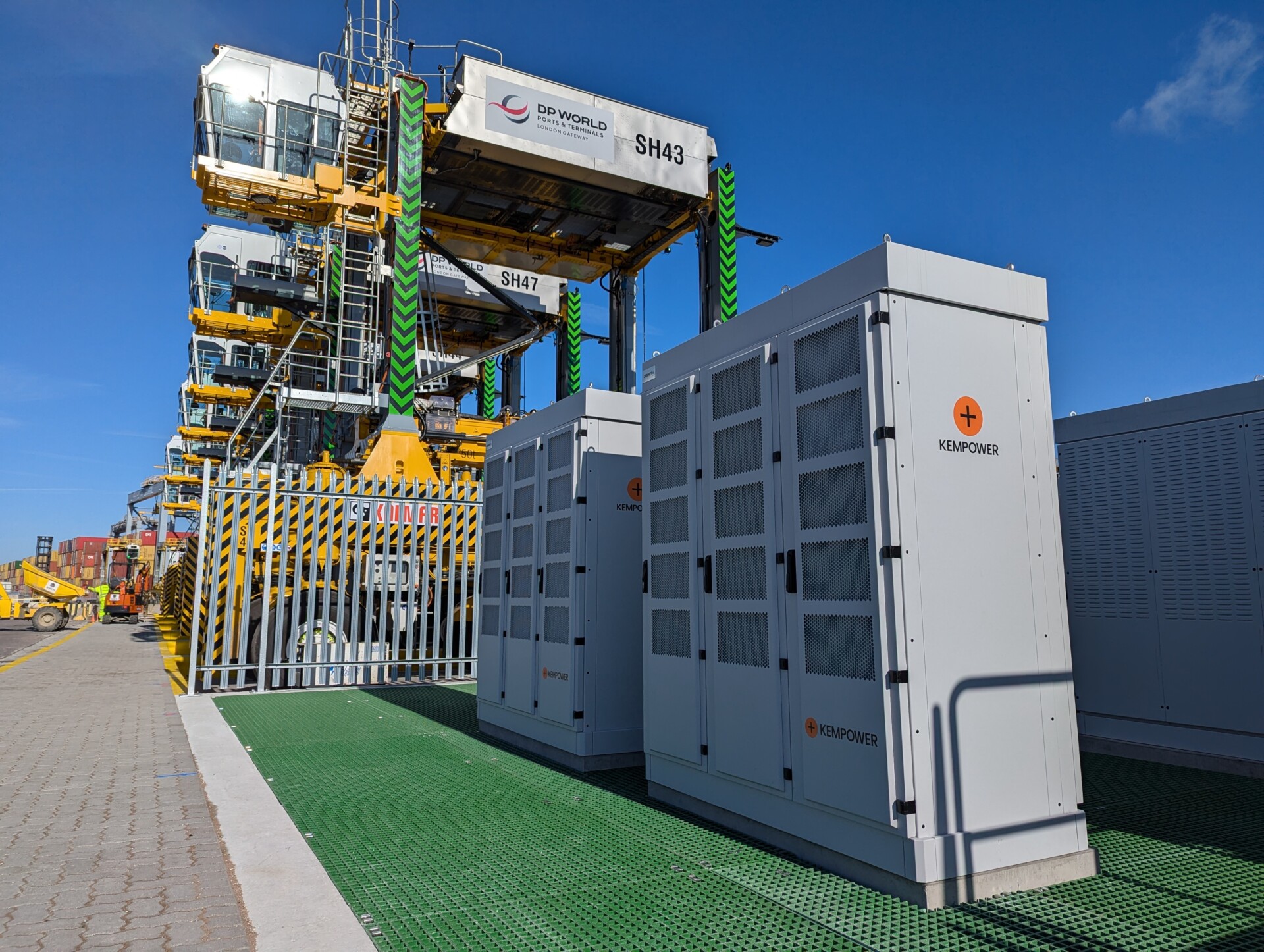
Sign up for daily news updates from CleanTechnica on email. Or follow us on Google News!
Most electric vehicle news is about personal transportation: cars, SUVs, trucks, ebikes, and so on. Social media content about EVs tends to focus on personal transportation as well. Industrial applications may be overlooked, which is what makes this particular use case so interesting. Replacing diesel cargo transport vehicles at ports is beneficial because they generate too many dirty emissions, which are both bad for the climate and human health.

Kempower is a DC fast-charging manufacturer based in Finland that just announced the company has partnered to provide an ultra-high-power 500A continuous charging system for Kalmar electric straddle carriers. These straddle carriers are mobile cranes that transport and stack cargo containers within port terminals. The Kempower ultra-fast chargers will operate at London Gateway, which handles about one million containers per year.
Antti Vuola, Kempower’s Director of Market Segments, answered some questions about the new charging system for CleanTechnica.
You will deploy Europe’s first ultra-high-power 500A continuous charging system for Kalmar electric straddle carriers at its port facility DP World London Gateway. How much faster is your new system than a typical one?
Our ultra-high-power system delivers a continuous 350 kW for 45 minutes, perfectly aligned with a standard drive break. This ensures significantly faster charging than conventional EV systems, which provide lower power and cannot sustain high output for such durations. It’s a game-changer for efficient port operations. Along with its speed, Kempower’s charging system offers several benefits, such as its modular and scalable design.
What is the cost of your system?
We focus on tailoring solutions to meet the unique needs of each client, and pricing depends on specific project requirements, we are unable to share pricing for this project.
How long will it take to charge an electric straddle carrier from zero to full?
The charging time depends on different factors. Straddle carriers typically do not arrive with a state of charge (SoC) of 0%, but usually between 10-30%. Charging from 0-80% takes the 45-minute break.
You will supply eight liquid-cooled charging Satellites, eight 500 kW Power Units, and the Kempower ChargEye charging management system. How long will it take to install the system and when will it be operating?
Our systems are designed for rapid installation and can be operational within a week. However, completing the entire project—including grid connections, civil works, and other infrastructure—takes additional time. We work closely with all stakeholders to streamline these processes and get you up and running as quickly as possible.
Do the electric straddle carriers move containers from newly arrived ships into warehouses and/or stack them outdoors or do they also place them on tractor trailers for truck delivery?
This depends on the specific port’s operations. At DP World London Gateway, the straddle carriers primarily transport containers from stacks to terminal tractors, which then move them to the ships. Our charging solutions seamlessly integrate into these workflows.
Do non-electric straddle carriers run on diesel fuel or gasoline?
They typically run on diesel. Transitioning to electric eliminates the need for diesel, reducing emissions and contributing to greener port operations.
Do the electric straddle carriers operate 8 hours a day during the work week?
Operating schedules are determined by the terminal operator and the specific use case. Typically, straddle carriers operate in 8-hour shifts with 45-minute breaks for charging. Our system is designed to support and enhance these operational patterns.
Chip in a few dollars a month to help support independent cleantech coverage that helps to accelerate the cleantech revolution!
Have a tip for CleanTechnica? Want to advertise? Want to suggest a guest for our CleanTech Talk podcast? Contact us here.
Sign up for our daily newsletter for 15 new cleantech stories a day. Or sign up for our weekly one if daily is too frequent.
CleanTechnica uses affiliate links. See our policy here.
CleanTechnica’s Comment Policy




